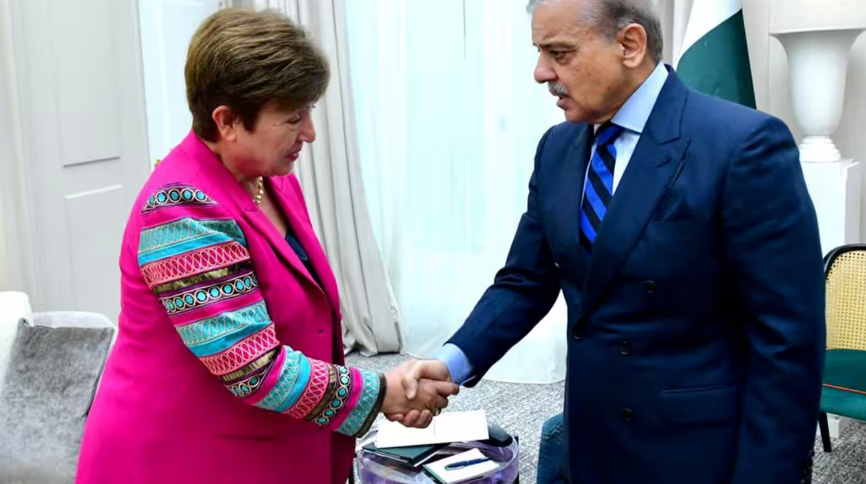(Al Jazeera Media Network) When Pakistan reached yet another staff-level agreement (SLA) with the International Monetary Fund (IMF) in July for a $7-billion, three-year loan program, it was hailed as a lifeline for both the government, which had assumed office only months before, and the country itself, which was reeling under a severe economic crisis.
However, two months later, Pakistan is still waiting for the United States-based global lender’s approval of the program, Pakistan’s 25th since the first such bailout deal was signed in 1958.
The IMF executive board, responsible for ratifying SLAs and releasing funds, is yet to include Pakistan’s case on its agenda. The delay has fuelled speculation about whether the debt-hit country has failed to meet the IMF’s bailout conditions.
Earlier this week, Pakistan’s Deputy Prime Minister Ishaq Dar accused the IMF of “deliberately delaying” the release of funds.
“In the past two-and-a-half years, efforts have been made to sabotage Pakistan’s critical negotiations with the IMF. There was geopolitics at play when Pakistan was close to default,” Dar said while attending an official event in London.
“Why shouldn’t I raise a finger when our technical review is complete? Why are they wasting our time?” he said.
Pakistan’s economic meltdown was worsened by political instability – and both tragedies hit the cash-starved nation of 241 million people at almost the same time.
In 2019, then-Prime Minister Imran Khan secured a three-year IMF program, but violated its conditions by drastically reducing fuel prices in early 2022, shortly before his government was deposed through a parliamentary vote.
The succeeding coalition government, headed by current Prime Minister Shehbaz Sharif, resumed the program in August 2022. Dar was appointed finance minister the next month.
But Sharif’s government failed to secure a remaining tranche of the $6.5 billion agreed to under the 2019 loan deal.
Meanwhile, the condition of the economy worsened, pushing Pakistan to the brink of default. Inflation surged to a record 38 percent in May 2023, while foreign reserves dwindled to just more than $3 billion.
In the next eight months, numerous meetings were held between the IMF and Pakistani officials – but the final instalment was not released.
Pakistan eventually narrowly avoided default when Shehbaz Sharif, in his first stint as prime minister, managed to secure a new, nine-month long $3-billion Stand-by Agreement (SBA) with the IMF in June 2023.
A caretaker government came to power in August 2023, following the completion of the previous parliament’s term of five years.
In its six-month-long tenure until February 2024, the interim government ensured the SBA remained on track to completion, meeting key IMF demands of maintaining “fiscal discipline, structural reforms, and a return to market-determined exchange rate.”
Sharif became the prime minister for the second time after the February elections and handpicked Muhammad Aurangzeb, a veteran banker, to be the new finance minister in an effort to bring stability to the economy.
By August 2024, inflation had dropped to 9.6 percent, the lowest since October 2021, while foreign exchange reserves – bolstered by deposits from China, the UAE, and Saudi Arabia – stood at just more than $9 billion.
In April, Aurangzeb-led Finance Division managed to complete the SBA, and in subsequent negotiations with the IMF, Pakistan managed to reach an agreement for a new $7-billion loan program in July.


